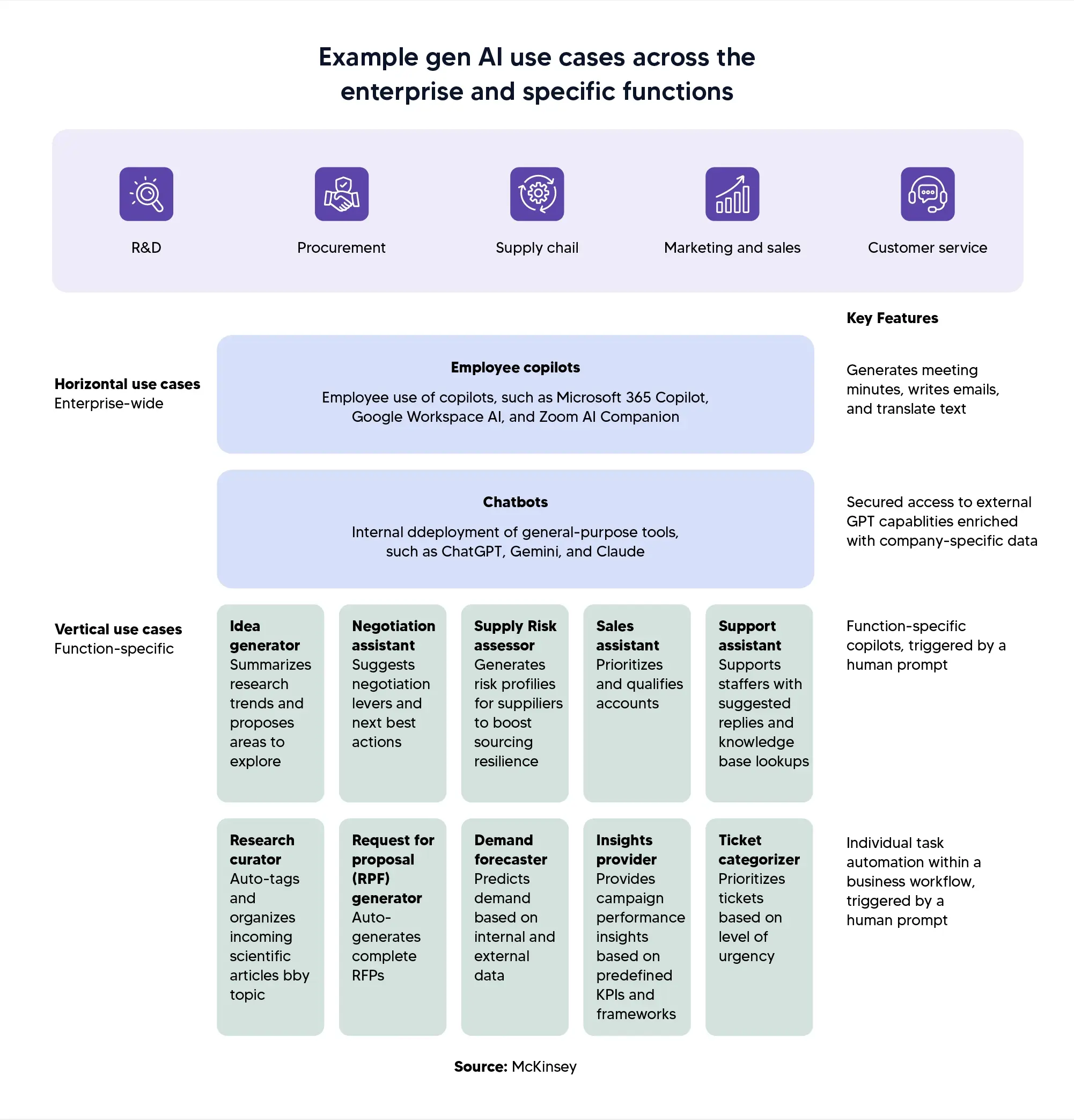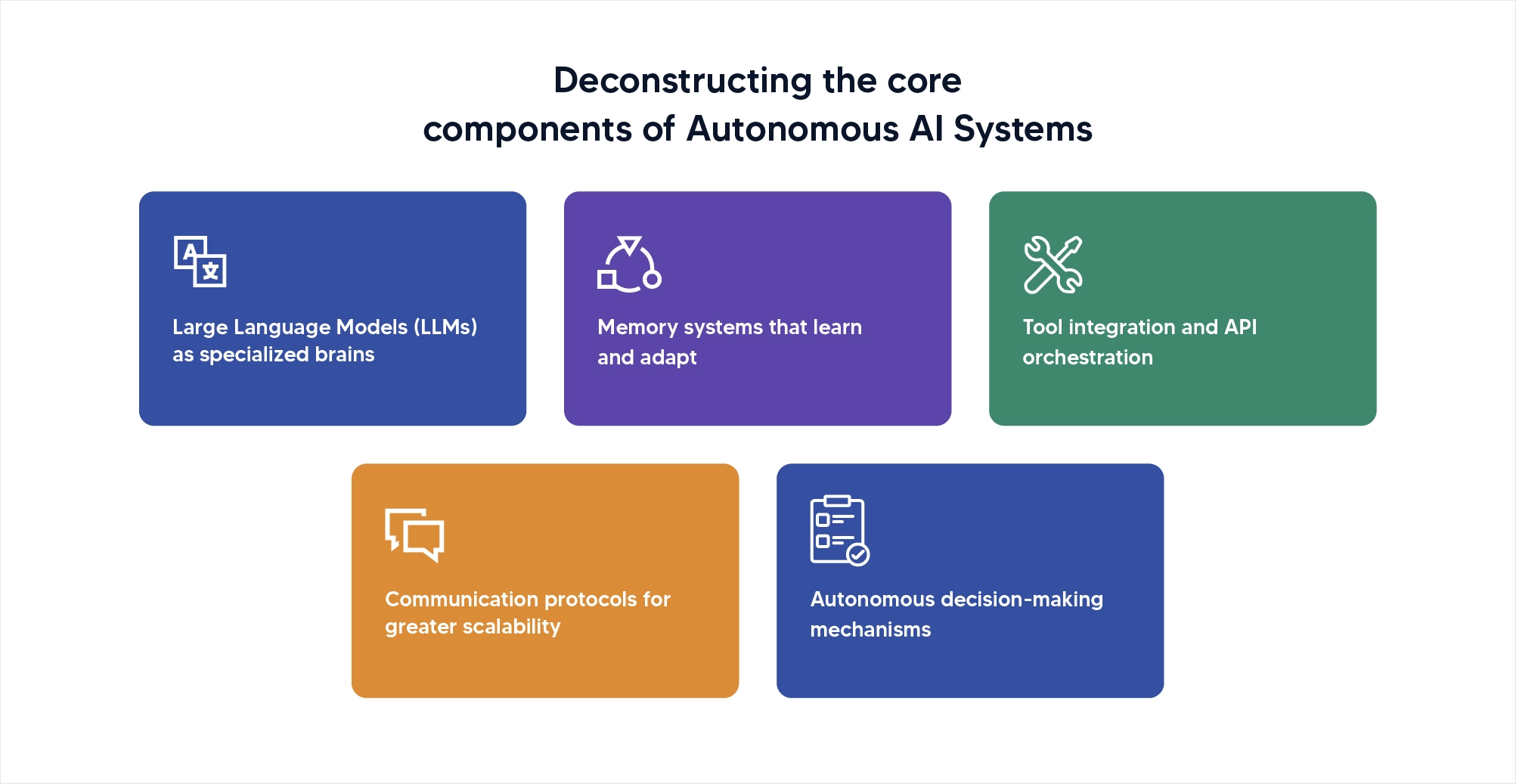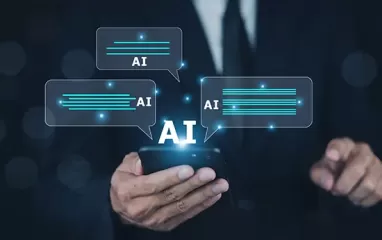Other recent blogs



Let's talk
Reach out, we'd love to hear from you!
Do you know the agentic AI market is expected to reach USD 196.6 billion by 2034, growing at a CAGR of 43.8% with no signs of slowing down? The impact is the greater dominance of Multi-Agent AI Architecture adoption by companies across sectors such as finance, insurance, e-commerce, healthcare, and more to handle complex and distributed workflows. However, a significant portion of companies that are still relying on generative AI (GenAI) in some capacity report no material contribution to earnings from their AI-centered initiatives.

The difference? Winners (the forward-thinking CEOs) are deploying multi-agent architectures that orchestrate specialized AI teams, while others remain trapped in single-agent limitations across business functions. Building autonomous AI systems has become the defining factor between AI-powered transformation and AI-powered disappointment. Single-agent systems crumble under enterprise complexity and create bottlenecks that strangle business velocity. Multi-agent AI architectures eliminate these constraints by distributing intelligence across specialized units that collaborate seamlessly.
The Multi-Agent AI revolution: Beyond single-point GenAI solutions
Forget everything you know about monolithic AI systems because Multi-agent AI architecture represents a fundamental paradigm shift—from centralized intelligence to distributed cognitive networks that mirror how elite organizations actually operate.
Traditional AI implementations fail because they force complex business processes through single-point solutions. Imagine trying to run your entire company through one super-employee who handles everything from customer service to strategic planning. That's exactly what single-agent systems attempt to do, and the results speak for themselves.
Multi-agent architectures create specialized cognitive units, each optimized for specific business functions while maintaining seamless coordination capabilities. Your customer service agent doesn't waste computational resources on supply chain optimization, but it instantly knows when to escalate inventory concerns to the operations agent.
The breakthrough lies in emergent intelligence—when agents collaborate, they generate solutions that transcend their individual capabilities. A marketing agent detecting campaign performance anomalies collaborates with the analytics agent to identify root causes, while simultaneously triggering the content agent to adjust messaging strategies. This happens in real-time, without human intervention, creating business responsiveness that was previously impossible.
Consider Lumen's transformation: they cut a traditionally four-hour seller process down to just 15 minutes, projecting annual time savings worth $50 million. This wasn't achieved through faster processing—it was accomplished through intelligent task distribution across specialized agents that eliminated redundant steps and optimized workflows.
Deconstructing the core components of Autonomous AI Systems

- Large Language Models (LLMs) as specialized brains
Each agent employs domain-specific LLMs that excel in their operational context. Financial analysis agents utilize models trained on market data, regulatory requirements, and quantitative analysis patterns. Customer service agents leverage conversational models optimized for empathy, problem-solving, and escalation protocols. The architecture's power emerges from matching cognitive capabilities to functional requirements. - Memory systems that learn and adapt
Advanced memory architectures enable agents to accumulate knowledge across interactions. Short-term memory handles immediate task contexts and active conversations. Long-term memory stores learned patterns, user preferences, and strategic insights. Episodic memory captures successful collaboration patterns between agents. This creates a learning ecosystem where each interaction improves future performance. - Tool integration and API orchestration
Agents access your existing business infrastructure through sophisticated tool integration layers. Each agent maintains its own toolkit—CRM systems, payment processors, inventory databases, communication platforms. The architecture ensures agents can access necessary tools without creating security vulnerabilities or system conflicts. Advanced orchestration manages tool conflicts and ensures data consistency across the ecosystem. - Communication protocols for greater scalability
Multi-agent systems require sophisticated communication frameworks that handle everything from simple status updates to complex negotiation protocols. The architecture defines how agents share information, coordinate tasks, and resolve conflicts. Priority systems manage competing requests, while encryption and access controls ensure sensitive information flows only to authorized agents. - Autonomous decision-making mechanisms
The most critical component enables agents to make decisions, execute actions, and adapt to changing conditions without human intervention. This includes decision trees optimized for specific business contexts, rule-based systems that encode business logic, and machine learning models that improve decision quality over time. The architecture defines when agents should act independently versus when they should collaborate or seek approval.
Multi-Agentic AI frameworks: Top building blocks for Autonomous Agents-centered ecosystem
The Agentic framework landscape has evolved beyond simple tool selection to strategic architecture decisions that determine long-term success. Each framework addresses different aspects of multi-agent complexity, and the optimal choice depends on your specific business requirements and technical constraints. Let’s delve deeper into the most popular Agentic AI frameworks:

- CrewAI excels at scenario-based teamwork where agents need clear role definitions and collaborative workflows. This framework particularly shines in creative problem-solving scenarios where agents must negotiate solutions through iterative dialogue. Financial modeling teams, product development groups, and strategic planning units benefit from CrewAI's structured collaboration capabilities.
- LangChain and LangGraph provide enterprise-grade solutions for complex, code-intensive implementations. These frameworks offer extensive tooling for agent communication, memory management, and integration with external systems. They're particularly valuable for organizations requiring sophisticated reasoning capabilities and extensive customization options. The learning curve is steep, but the flexibility and power justify the investment for complex enterprise deployments.
- AutoGen takes a conversation-driven approach, focusing on multi-agent interactions that require complex dialogues and consensus-building. This framework simplifies the development of agents who need to engage in negotiations, evaluate alternatives, and reach decisions through collaborative reasoning. AutoGen's dialogue-centric architecture benefits legal review processes, compliance assessments, and strategic planning scenarios.
- Microsoft Semantic Kernel brings enterprise-grade security and integration capabilities, making it ideal for organizations with strict compliance requirements and complex existing infrastructure. The framework provides robust authentication, comprehensive audit trails, and seamless integration with Microsoft's ecosystem of business tools. For organizations already invested in Microsoft technologies, Semantic Kernel offers the fastest path to production deployment.
- Visual Development Platforms like n8n and Flowise enable rapid prototyping and business user accessibility. These platforms excel at connecting existing business tools and creating automated workflows that span multiple agents. They're particularly valuable for organizations that need to deploy multi-agent solutions quickly without extensive development resources.
Implementation roadmap to Multi-Agent enterprise AI solutions: From strategic vision to autonomous enterprise

Phase 1: Strategic process mapping
Begin by identifying business processes that involve multiple stakeholders and clear handoffs between different functional areas. Customer onboarding, order processing, incident response, and financial reporting represent ideal starting points because they involve predictable workflows with measurable outcomes. Map existing pain points, bottlenecks, and coordination failures that multi-agent systems can address.
Phase 2: Agent ecosystem design
Create detailed specifications for each agent, including their decision-making authority, required integrations, and communication protocols. Define clear boundaries between agents to prevent conflicts and ensure accountability. Establish hierarchical relationships and escalation paths that mirror your organizational structure while optimizing for efficiency.
Phase 3: Infrastructure foundation
Build your communication infrastructure before deploying agents. This includes message queuing systems, shared databases, and monitoring tools that track agent performance and interactions. Your communication layer must handle both synchronous coordination for immediate responses and asynchronous collaboration for background processing.
Phase 4: Controlled deployment
Test your system with a limited scope initially. Deploy agents in controlled environments where they can handle real tasks but with human oversight and the ability to quickly intervene. Monitor performance metrics, interaction patterns, and error rates to identify optimization opportunities. This phase typically lasts 3-6 months depending on complexity.
Phase 5: Progressive scaling
Gradually expand by adding new agents or enhancing existing agent capabilities. Each expansion should include thorough testing of new interactions and validation that existing agents continue performing optimally. Maintain detailed documentation of agent behaviors and system changes to support ongoing maintenance and troubleshooting.
Critical Multi-Agent AI systems implementation challenges and strategic solutions
Despite the transformative potential, multi-agent AI systems face significant challenges that require sophisticated mitigation strategies.

- Coordination complexity:
Agents performing autonomously and independently in decentralized networks can experience coordination difficulties. When multiple agents attempt to access the same resources or make conflicting decisions, the system needs robust conflict resolution protocols. This complexity multiplies exponentially as more agents are added or their capabilities expanded. - Scalability bottlenecks:
The creation of an effective multi-agent architecture requires advanced planning and a deep understanding of agent interaction patterns to avoid code failures. Network latency, message processing delays, and resource contention can create performance degradation that undermines system effectiveness. The architecture must accommodate growth without compromising response times or reliability. - Security and ethical governance:
It becomes critical when agents operate autonomously across sensitive business functions. These systems interact, learn, and sometimes make decisions with limited human oversight, making them susceptible to adversarial manipulation, ethical lapses, and regulatory breaches. Avoiding bias requires careful training, data curation, and ongoing monitoring of agent decisions. Misinformation risks arise when agents process conflicting information or make decisions based on incomplete data. - Solution architecture:
Implement hierarchical coordination systems that establish clear decision-making authority and escalation paths. Use distributed processing architectures with load balancing to manage scalability concerns.
Establish comprehensive audit trails and decision logging to maintain accountability. With continuous monitoring systems, you can track agent behavior patterns and identify potential issues before they impact business operations.
Most importantly, create regular bias testing and ethical review processes to ensure agents operate within acceptable parameters.
The Kellton advantage to accelerate your Multi-Agent AI Architecture adoption
The transformation to autonomous multi-agent systems demands more than technical implementation—it requires a strategic partnership with experts who understand both the technology and your business context.
Kellton's multi-agent architecture practice combines deep technical expertise with business acumen developed through hundreds of successful deployments. We don't just build systems; we architect transformation that delivers measurable business value while mitigating implementation risks.
Our proven methodology addresses the complete transformation journey: strategic process analysis, architecture design, framework selection, infrastructure optimization, and progressive deployment. We handle the complexity of integration challenges, scalability concerns, and security requirements while ensuring your organization maintains control and visibility throughout the process.
Whether you're exploring multi-agent possibilities or ready to deploy sophisticated autonomous systems, Kellton's technical excellence and battle-tested methodologies accelerate your journey toward intelligent business automation. We transform your vision of autonomous operations into a competitive advantage.
Partner with Kellton to unlock the full potential of multi-agent AI architecture—because in the race toward autonomous business, the first to master coordination wins.



